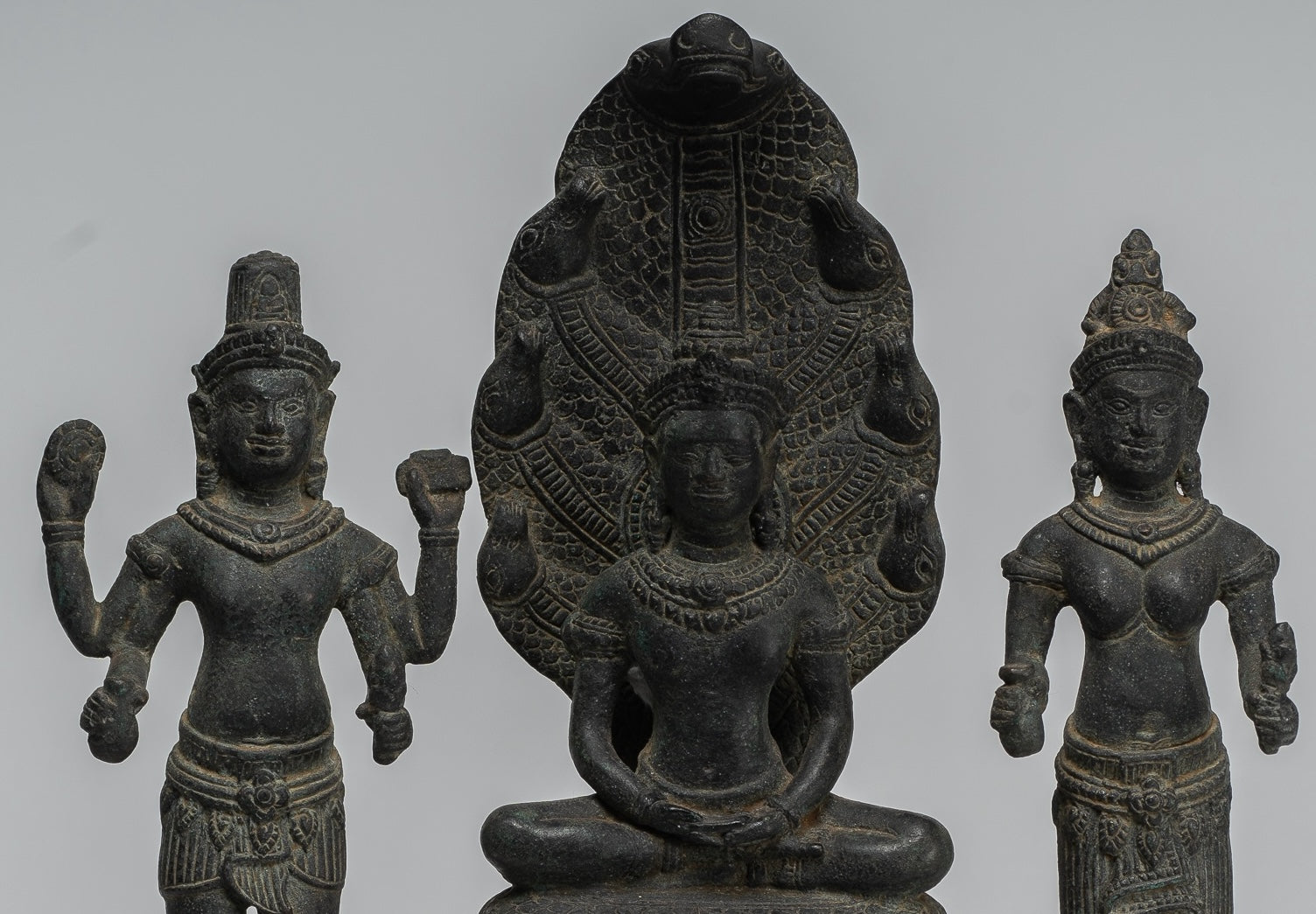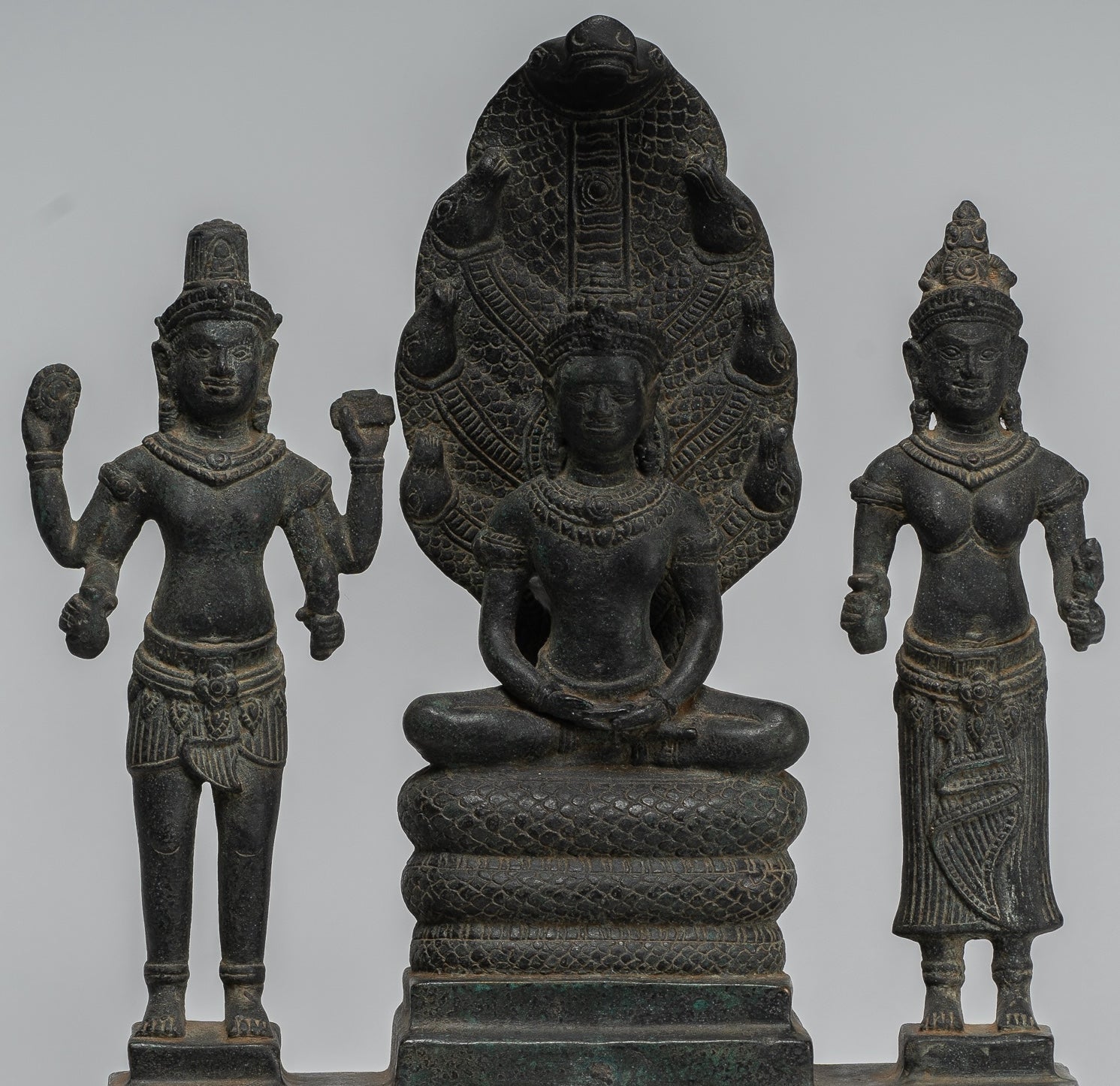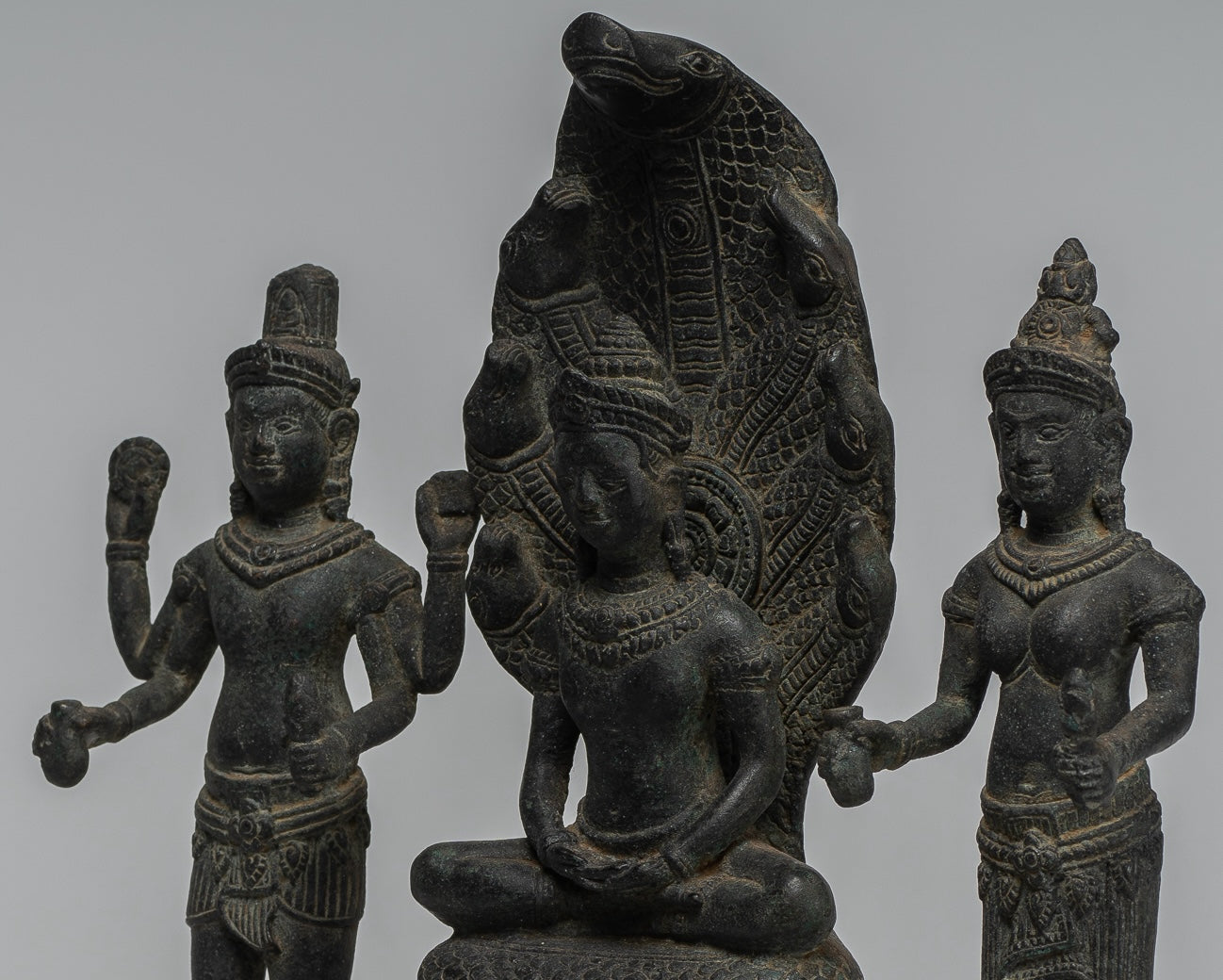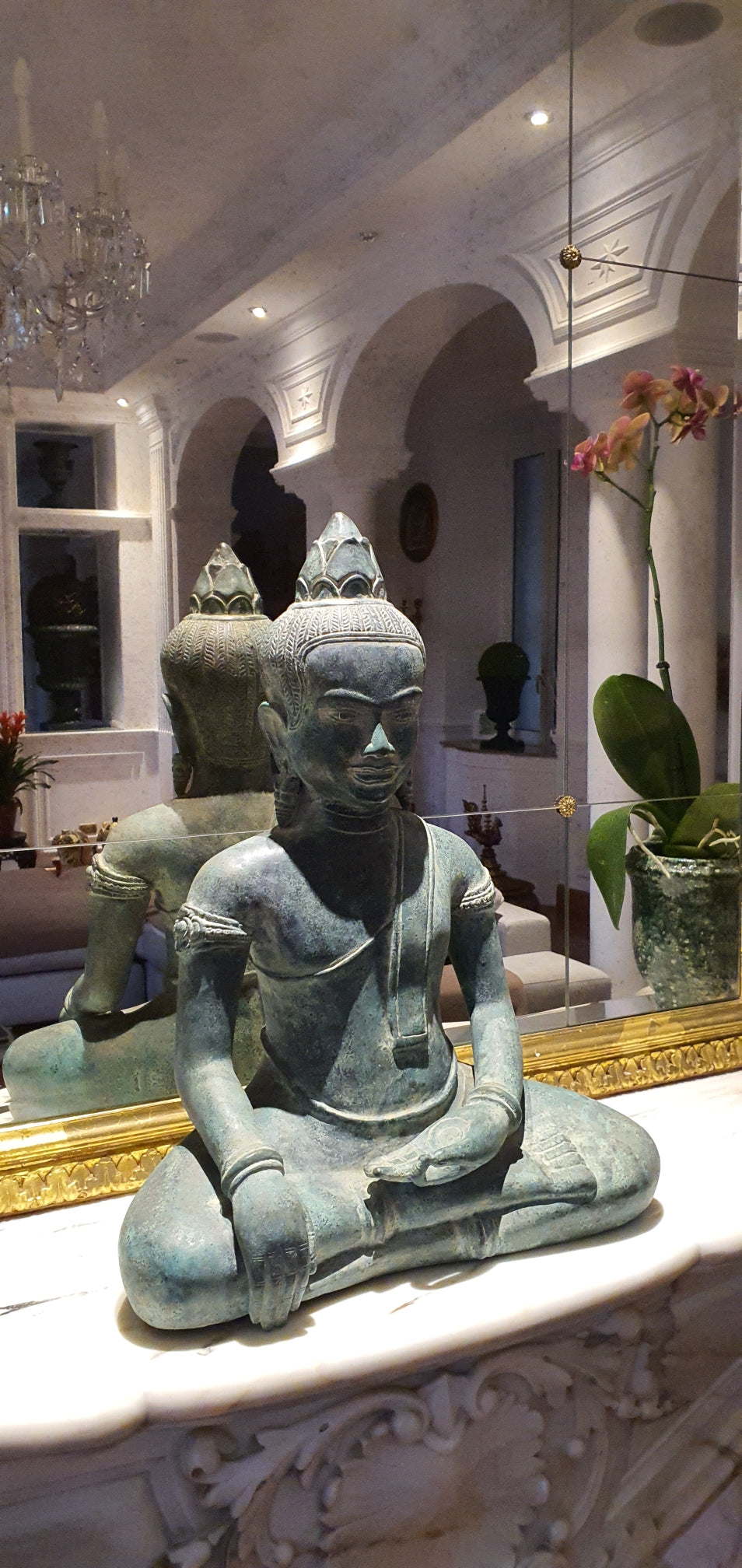-
Buddha Statue - Antique Bayon Style Khmer Meditation Buddha. Vishnu and Lakshmi- 36cm/14"
Measures (Height) 36cm/14"
An antique 12th century post-Angkor Bayon style bronze triptych of the meditation Buddha, Vishnu and Lakshmi. Here Buddha is seated on a three-tired throne, with the flaring head of a giant Naga, the serpent King Muchalinda, rising behind protectively behind. His hands are in the Dhyana mudra, the gesture of Meditation.
The Buddha's face is serene, with a naturalistic and warm expression; his head is topped by a detailed ushnisha, in the Bayon style.
The Buddhas hands are in Dhyana Mudra, the hand gesture that promotes the energy of meditation, deep contemplation and unity with higher energy. Fingers barely touching and gently folded over the lap with palms facing upward - representing gentleness and purity. The Meditation Buddha, also known as Dhyana Mudra or Samadhi Mudra, is an iconic representation of the Buddha in a contemplative and meditative posture. This image holds deep significance within Buddhist tradition, conveying essential teachings and embodying the virtues of inner peace, mindfulness, and spiritual reflection.
His eyes are downcast, his compassionate face bestowing peace, blessings and inner serenity on his devotees. The Buddha's face is serene, with a naturalistic and warm expression; his head is topped by a detailed ushnisha, in the Bayon style. The serpent is well rendered and symmetrical. The throne is formed by the coils of the serpent. The story told here being that Muchalinda protected the Buddha from heavy rain.
Here, Buddha is flanked by Vishnu and Lakshmi. A not unusual representation of three deities that were significant in Khmer culture during this period. Here both Vishnu and Lakshmi are stood sambhanga on a simple pedestal.
Vishnu is clad in a short sampot with fishtail pleat and jewelled sash, the face with wide features surmounted by a cylindrical headdress. Here Vishnu, as the protector and preserver, is holding a chakra discus, sutra and lotus flower. The lotus flower represents purity, compassion and the giving of great joy to all.
He also holds in his lower right hand his kalasha. The kalasha is considered a symbol of abundance and "source of life" in the Vedas. It is referred to as "overflowing full vase" in the Vedas. The Kalasha is believed to contain amrita, the elixir of life, and thus is viewed as a symbol of abundance, wisdom, and immortality.
Lakshmi is similarly presented, also, holding a lotus flower and kalasha.
This iconography is seen during the reign of Khmer King Jayavarman VII (ca. 1181 to 1218 CE), who established a cult based around it. The statue is cast in the round, rather than as a relief, or a stela. From this, we can infer that Khmer sculptors would have desired their artwork to be viewed from all sides and thus placed in the center of temples rather than against a wall.
While this artwork was religious - priests supervised its execution - its realism is unmistakable.
This traditional in appearance piece is sure to add serenity to your home, office or sacred space.
SATISFACTION GUARANTEE - We have been offering SE Asian Art for many years and are proud of the reputation we have developed for fair and honest listings. However, if for any reason, whatsoever, you are unhappy with your purchase please just let us know and we will provide a full refund. We want you to be 100% happy with your purchase.
-
The majority of orders will be shipped with DHL. This is a secure, express and fully tracked service.
Items less than 2Kg we typically ship using Royal Mail.
Once we receive your order we try to ship all orders the same or next working day.
Large and/or fragile pieces requiring palletising, specialist crating and/or extra packaging may take a little longer. Palletised shipments will be delivered curbside.
All orders over 35 GBP will be shipped free of charge.

-
We genuinely hope that all purchases delight.
However, if they do not, regardless of reason, we will refund all orders upon receipt of the unwanted item. Just notify us within 14 days of receiving your order that you wish to make a return and send the piece back to us with 30 days of delivery.
The Ganesha statue, representing the beloved Hindu deity of wisdom, prosperity, and new beginnings, has long been a symbol of auspicious energy in homes, gardens, and sacred spaces.
Whether you’re an art collector, a spiritual practitioner, or simply captivated by Ganesha’s timeless beauty, selecting the right piece—especially in wood, stone, or bronze—requires both knowledge and intuition.

















































